3 Days in Madison, Georgia
Located an hour from Atlanta, Madison invites visitors to step into a storybook filled with tales of the town’s vibrant past
You don’t have to be a history buff to enjoy a visit to Madison. If you have a curious mind and a love of beauty, art, or learning, you’ll find something special here in the heart of historic Madison, Georgia. Local historical sites reveal the legacies of diverse cultural heritage while immersing visitors in area art and architecture.
Named one of Southern Living’s Best Small Towns in Georgia, this charming town promises an unforgettable adventure filled with historical elegance and southern hospitality.
Day 1 – Uncover the History and Heritage Small, Southern Madison, Georgia
Madison-Morgan Cultural Center
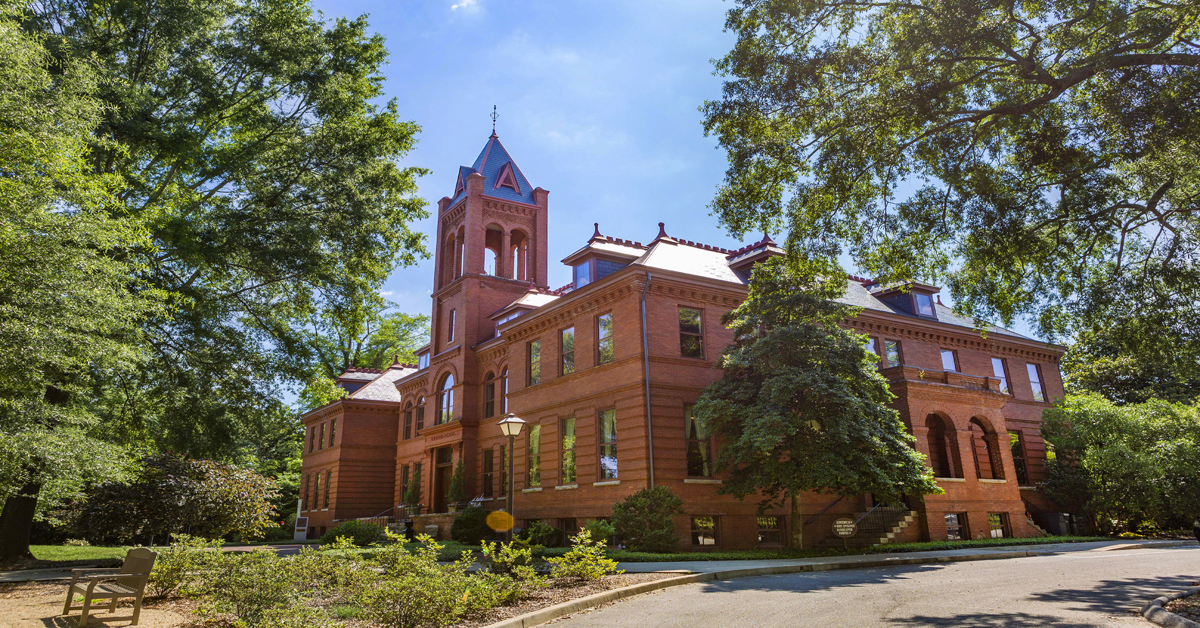
Start your journey with a deep dive into the history and heritage of Madison, Georgia, by visiting Madison-Morgan Cultural Center. Built in 1895, the breathtakingly restored Romanesque Revival building was once among the first public graded schools in the Southeast. Today, the Center serves as a vibrant epicenter for cultural enrichment, presenting compelling performances, thought-provoking exhibitions, and extensive educational initiatives, each designed to engage and inspire. Visitors are invited to journey through carefully curated collections of artifacts in the Madison History Museum, ranging from reproduction lithographs of Native Americans to Civil War relics to masterpieces marking the social evolution of the region.
Head upstairs at the Center to view a reproduction classroom of the time—the classroom where famed comedian Oliver Hardy once attended. Discover how the Center transitioned throughout the decades from a segregated school to become a hub showcasing the area’s historical and cultural diversity. Not only is the Center a fully accessible attraction, but it also provides a fascinating look at the art, history, architecture, and cultural heritage of Madison over the years.
Morgan County African-American Museum
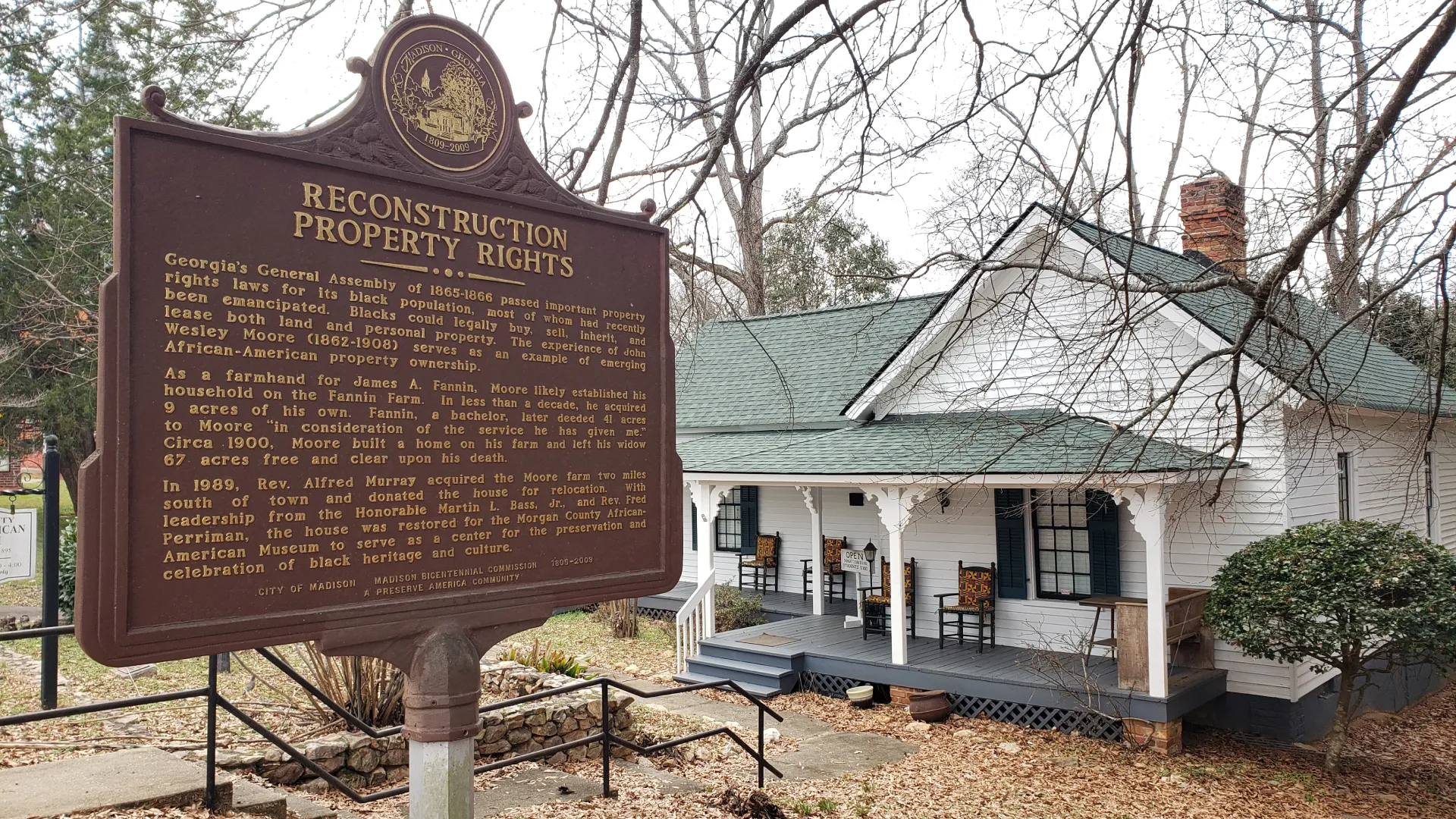
A glimpse into the area’s history would not be complete without a visit to the Morgan County African-American Museum in Madison. This museum was once the former home of Black tenant farmer, John Wesley Moore, who was born in the final years of slavery. The Morgan Country African-American Museum offers an important perspective on the history and heritage of the area by honoring the legacy of African Americans through historic and artistic displays. The museum’s exhibits provide a glimpse into the accomplishments and contributions of the local African-American community while telling the captivating stories of those who lived through historical transformative periods such as Reconstruction, desegregation and the Civil Rights Movement.
With the mission of fostering research, promoting preservation, and igniting interest of African American art, the Morgan County African-American Museum is dedicated to creating a community that understands its history and participates in building its future.
Day 2 – Discover the Iconic Architecture of the South
On your second day in this sweet small town, discover the delights of the Madison Historic District – one of the largest and oldest historic districts in Georgia. Take the self-guided walking tour exploring architectural treasures and the fascinating history of both historic house museums and private homes. The walking tour begins at the Welcome Center in the historic downtown square and winds around the historic district, through the cemeteries, and ends at Town Park. Expect to see meticulously preserved examples of Folk, Romantic, Greek Revival and Victorian architecture and to learn about historic preservation efforts undertaken by Madison residents over the years. In addition to shared oral histories, the walking tour shares historic photos documenting the changes in the town throughout the years.
Rogers House
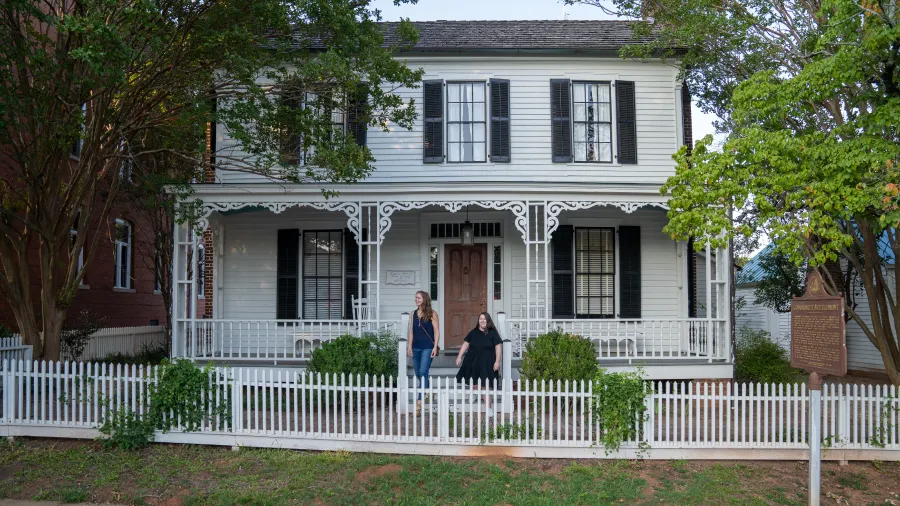
The walking tour conveniently passes three historic house museums that are open daily to the public for tours on the hour. In the heart of downtown Madison, visitors will find the Rogers House, a Piedmont Plain style home that was built in 1809, making it one of the oldest houses in Madison and the only historic home still in its original location. This house exemplifies the classic I-house style with two rooms wide, one room deep, and a central passage. The name Piedmont Plain might have emerged due to the unadorned design of the I-houses that were constructed in the Piedmont area in the United States, spanning between the Atlantic Coastal Plain and the Appalachian Mountains. Spindle work – a decorative turned porch trim featured in Victorian architecture – was later added to the porch of the Rogers House in 1868.
Rogers House has been home to at least 17 owners and has served a variety of purposes from a boarding house to a dentist’s office. Observe the “haint blue” color of the porch ceiling and learn about the superstitions underlying this curious custom. Note the long windows of Rogers House and allow the knowledgeable house docent to explain their significance in Madison’s social structure.
Rose Cottage
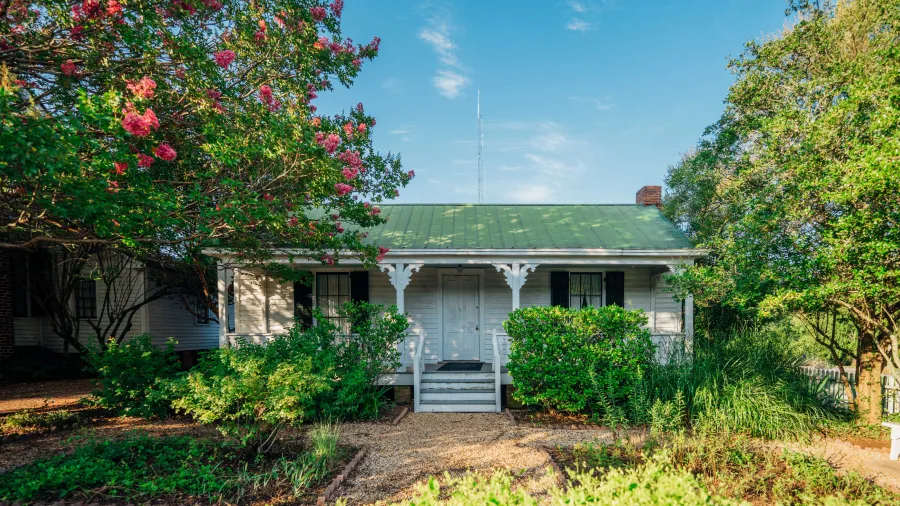
Go from Rogers House to Rose Cottage (c.1891), located just next door. This one-story home was owned by Adeline Rose who was born into slavery in 1864. This single mother worked as a laundress to raise her children in this home. Rose Cottage encapsulates the beauty of Folk Victorian style, which fuses the simplicity of folk architecture with the ornate decorative elements of Victorian embellishments. Symmetrical design with spindle work and cornice-line brackets are common features that together paint a vivid picture of a bygone architectural era.
For architecture and history lovers, Rose Cottage offers an admirable story of one woman’s success at a time when women, single mothers, and women of color were often excluded from home ownership. The simplicity of the furnishings juxtaposed with the challenges of the time period make for a fascinating stop along your architectural tour of downtown Madison.
Heritage Hall
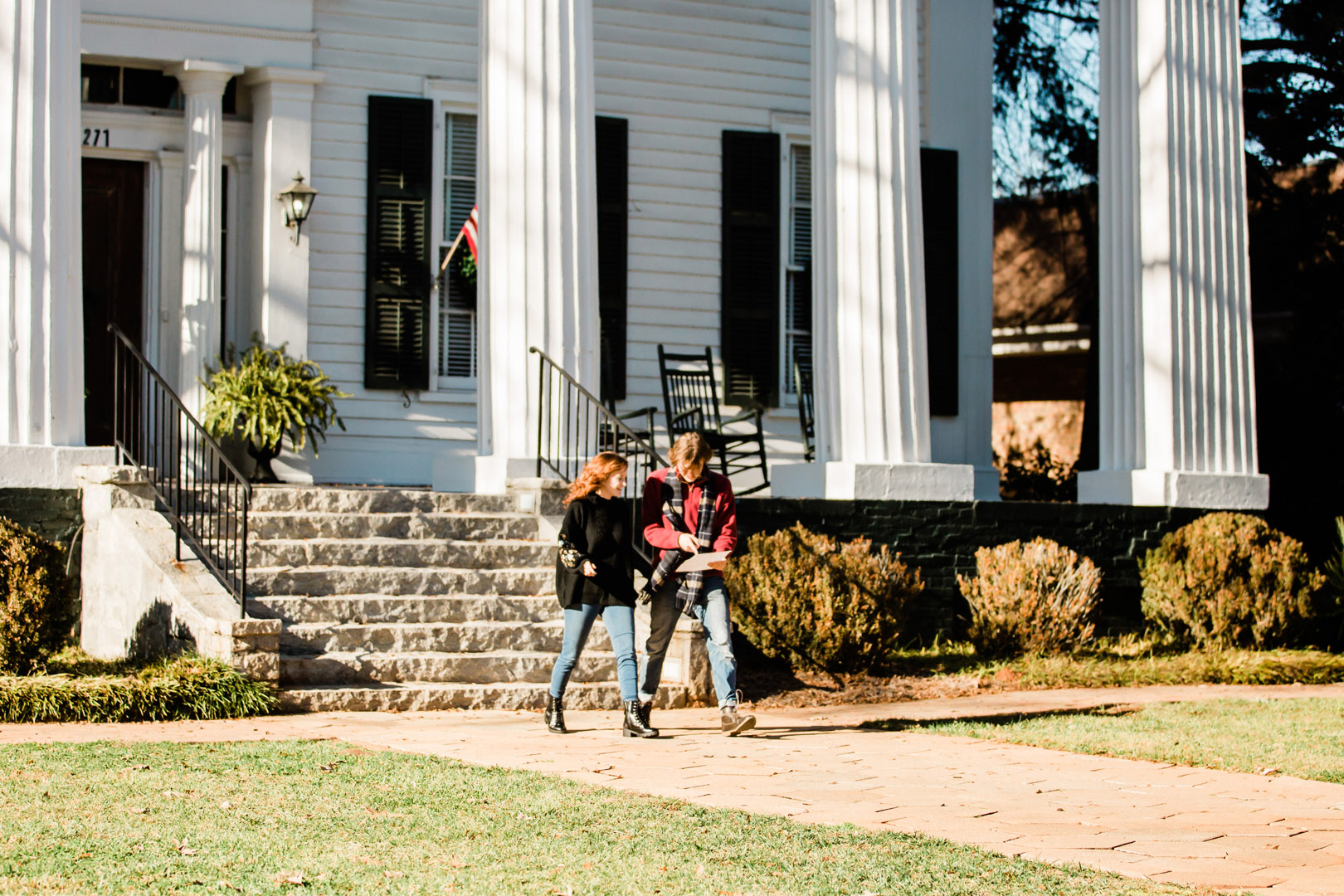
From Rose Cottage, travel to Heritage Hall (c. 1811), which breathtakingly showcases Greek Revival architecture–a style that flourished during the 19th century. This elegant home captivates visitors with its stately fluted Doric porch columns and columned doorways, evoking the timeless and elegant look of ancient Greek temples. The interior creates a sense of spaciousness with its expansive windows and wide central hall, brilliantly designed to maximize natural light and ventilation. Step outside to visit Heritage Hall’s garden and learn about the medicinal flowers and herbs grown in a doctor’s garden during that time.
Sitting on four acres of farmland, Heritage Hall was the town home of Dr. Elijah Evans Jones, a wealthy physician and a member of the Planter class. Heritage Hall offers a perspective into the lives of Dr. Jones and the wealthiest citizens of Madison in the pre-Civil War era. Learn about the diverse stories of those that lived in the home, from the wealthy white homeowners to the more than one hundred enslaved persons that worked on-site and across Dr. Jones’ nearly 3,000 acres of cotton fields and farmlands to help make this extravagant lifestyle possible.
Day 3 – Experience the Community’s Cultural Arts
Despite being smaller than some of the other stops along the Trail, don’t underestimate Madison’s cultural art presence. You can expect big things from the local art community. From art museums and galleries to live performances, Madison has much to offer.
Andrews Family Legacy Exhibit at Madison-Morgan Cultural Center

Although you’ve admired its restored Romanesque Revival architecture and explored its local history museum, don’t forget to head to the upstairs galleries to learn about the profoundly artistic influence of the Andrews family through a collection of artworks at the Andrews Family Legacy Exhibit, permanently on display at Madison-Morgan Cultural Center. Living through the era of segregation, the Andrews family’s work depicts the hardship of the sharecropping system – a practice where landowners exploited poor farmers, often leaving them in a cycle of debt and poverty- through both visual arts and storytelling. View the work of family patriarch George “The Dot Man” Andrews as well as the work of his sons, celebrated artist Benny Andrews and acclaimed author Raymond Andrews. The Andrews Family Legacy played a pivotal part in sharing the art, culture, and heritage of the area.
Just down the hall from the Andrews Family Legacy, you’ll find another gallery featuring the art of Benny Andrews—this time in the John Lewis collection. Learn about the Civil Rights movement and the work of John Lewis through the art of his good friend Benny Andrews. You can also expect to see visiting art exhibits on display in the upper galleries and check out the Center’s full calendar of events for musical performances throughout the year.
Steffen Thomas Museum of Art
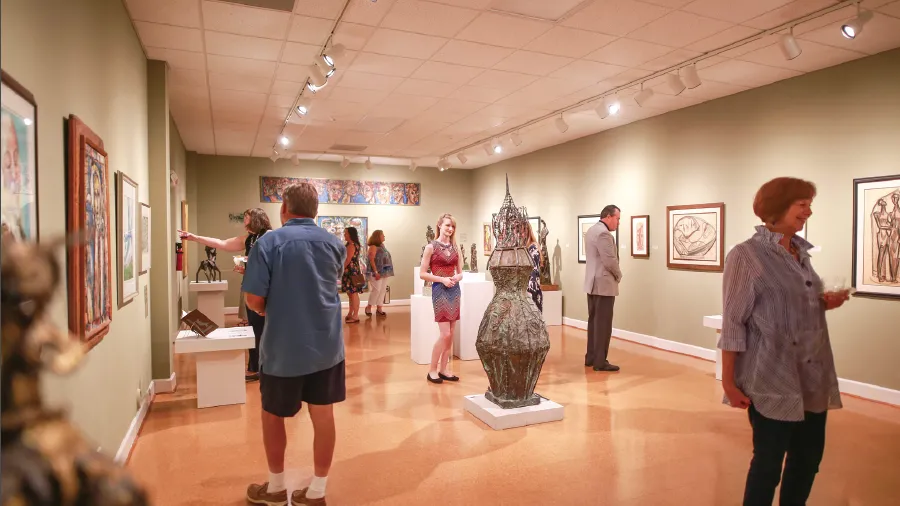
From the Madison-Morgan Cultural Center, travel to the Steffen Thomas Museum of Art. This museum houses the remarkable artwork of Steffen Thomas, an influential Atlanta artist who was born in 1906 in Germany. Thomas’s talent is undeniable for his unique artistic approach and ability to work across a wide spectrum of mediums and styles. You can also see examples of his work on display at Madison’s Town Park.
With Steffen Thomas’s passing, his family sought to establish a space to honor his masterpieces. Dedicated to his contributions to the art world, the museum was founded, featuring a collection of over 800 permanent pieces, including sculptures, mosaics, paintings, and works on paper, which regularly rotate to ensure a new experience for every visit. Additionally, the Steffen Thomas Museum of Art features the work of other artists throughout the year.
Madison Artists Guild & MAGallery

From the Steffen Thomas Museum, head back downtown to visit the Madison Artists Guild, a non-profit co-op that highlights a stunning breadth of work from local talents, including over 30 artists, artisans, and authors. The Guild is also dedicated to creating a nurturing environment where art lovers come together to engage in the process of making masterpieces, through classes and workshops. Madison Artists Guild offers a welcoming space for visitors to look for a unique piece to your collection or to explore the world of creativity.
The Guild is the perfect place to discover one-of-a-kind art, both fiction and non-fiction books by local authors, and view current exhibitions. You can also enjoy the Free Little Art Gallery located directly outside the Artists Guild. This gallery works in much the same way as any Little Free Library—but with art! Take a piece of art, leave a piece of art, or simply enjoy the offerings of others who have passed through Madison and stopped to add to this beautiful and creative collection.
Plan Your Visit
Plan your visit to start exploring Georgia’s Trail of Legacy and Lore in Madison, Georgia! This charming town has everything you need for a perfect getaway. Begin by booking your stay at one of Madison’s historic accommodations: The Brady Inn, an 1885 historic bed & breakfast, or Cedar Lane Farmstay, an authentically restored 1830s house included on the National Register of Historic Places.
During your visit, enjoy fascinating local attractions, shop the locally owned businesses downtown and enjoy delicious dining all while enjoying an enthralling journey through this small town’s art, architecture, and cultural heritage.
